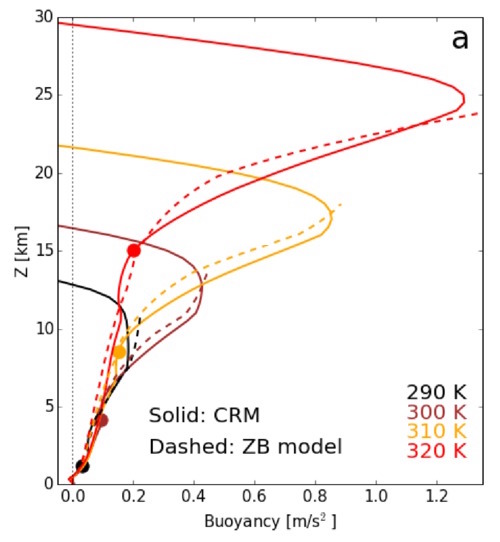Seeley and Romps, Why does tropical convective available potential energy (CAPE) increase with warming?, GRL, 2016
Paper
Description
The energy available to storms (to generate winds, hail, lightning, etc.) is measured by the quantity called convective available potential energy (CAPE). CAPE is the vertical integral of the buoyancy of an undiluted, near-surface parcel as it is lifted through the troposphere. Global climate models predict large increases in CAPE with global warming, leading to predictions of more intense storms and more frequent lightning. But, until recently, there has been no theory for CAPE or its dependence on temperature.
Using the zero-buoyancy plume model of Singh and O'Gorman (2013), we show here that CAPE increases with warming in an unexpected way. As the atmosphere warms, the buoyacy of an undiluted parcel does not increase in the lower and middle troposphere. Instead, CAPE grows by making the parcel increasingly buoyant in the upper troposphere, which is made possible by the rapid lifting of the tropopause with surface temperature. It is this ballooning of upper-tropospheric buoyancy that drives the Clausius-Clapeyron scaling of CAPE.
(solid) Profiles of undiluted parcel buoyancy in a cloud-resolving model for surface temperatures of 290, 300, 310, and 320 K. (dashed) Corresponding profiles of undiluted parcel buoyancy from the zero-buoyancy plume model. Solid circles mark where the theory predicts the transition to large upper-tropospheric buoyancies. Note that CAPE is proportional to the area enclosed by these curves.
